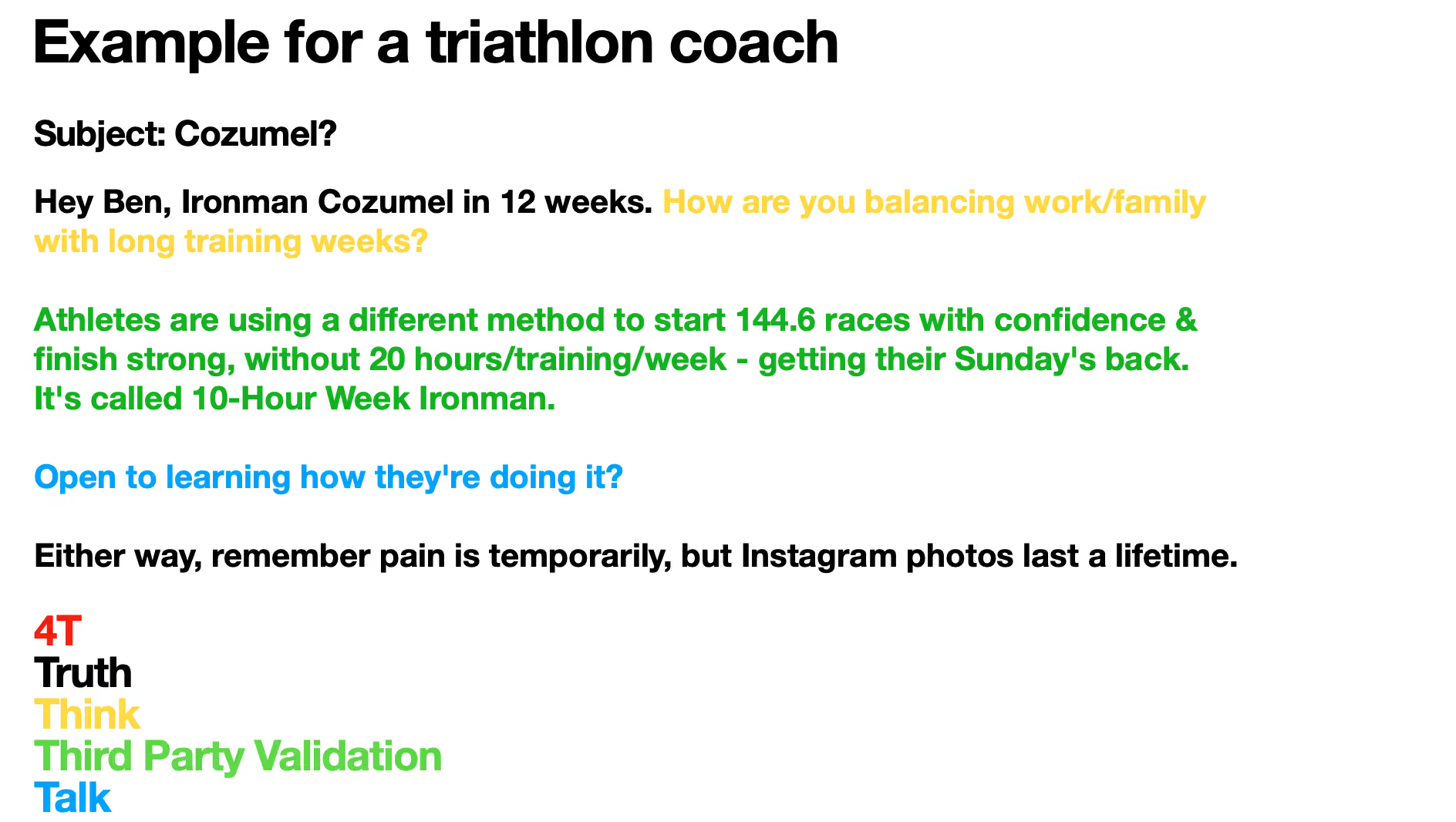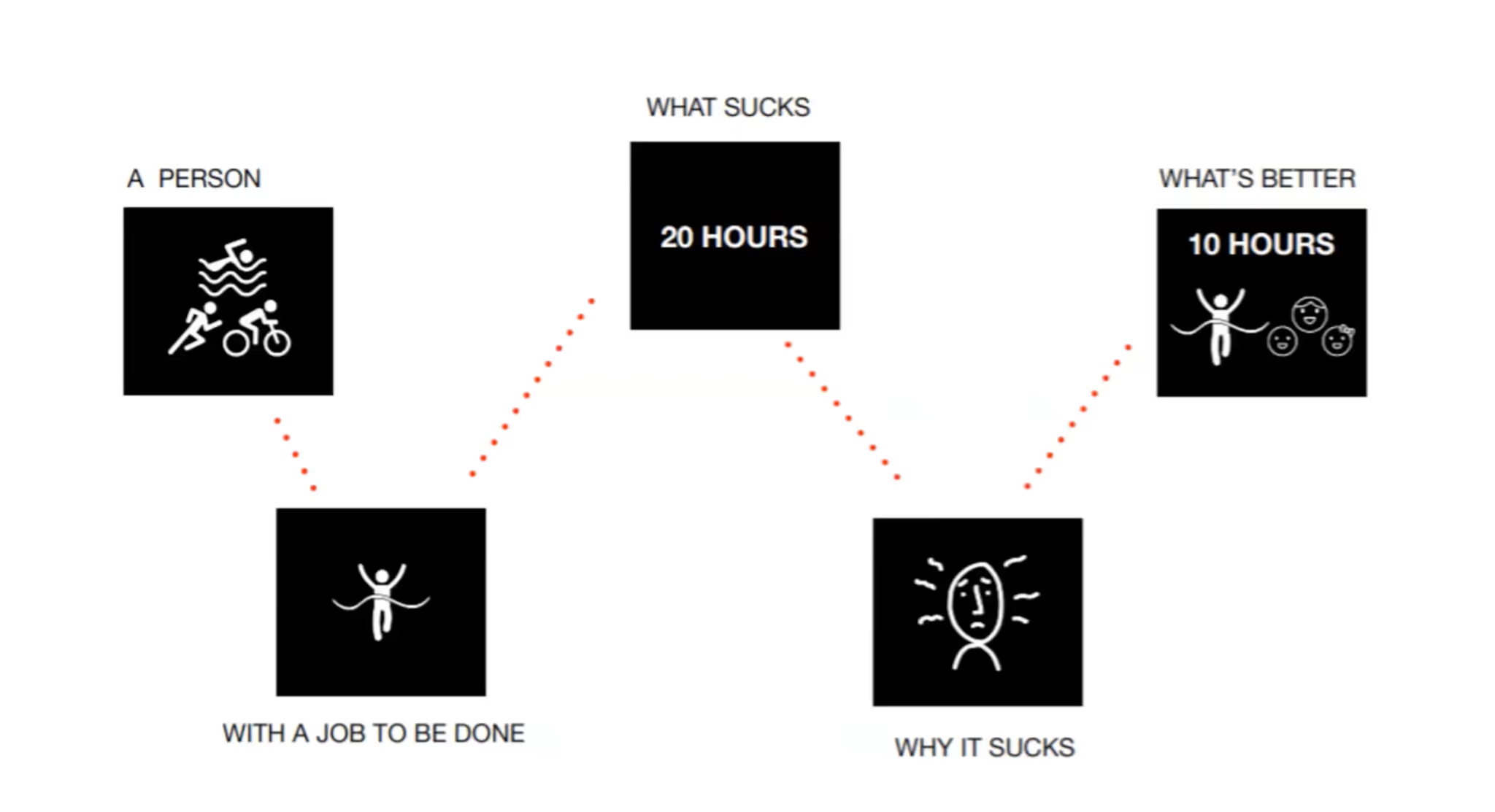Ready to create more pipeline?
Get a demo and discover why thousands of SDR and Sales teams trust LeadIQ to help them build pipeline confidently.



Sales teams can utilize the 4T template to structure cold emails effectively. You will learn how each part helps capture attention, engage thinking, validate with external proof, and invite conversation.

The cold email process should always start with researching your prospects thoroughly to tailor each section of your email.

Understanding the psychology behind each part of the 4T email template can help enhance the effectiveness of your communication, making your emails more compelling without relying on sales tactics prospects no longer respond to.
Get a demo and discover why thousands of SDR and Sales teams trust LeadIQ to help them build pipeline confidently.
To connect or not to connect: that is the question many SDRs have when they send off a cold email. While low response rates may be an industry norm, sales trainer Josh Braun knows that a well-written cold email can greatly enhance your chances of making that all-important first point of contact. He sat down with LeadIQ to share his insights on cold emailing best practices. By conducting the right research, following an established structure for emails, and applying your best editing chops, SDRs can learn to write great cold emails that bid adieu to the sound of crickets and welcome the “ping” of a cold email response.
The most crucial step in writing a good cold email is understanding how to follow a sound template. Braun shared that SDRs who write cold emails without implementing a tried-and-true structure are less likely to receive responses. Braun follows the 4T template: a four-sentence structure that taps into the psychology of how to make a great sales pitch without sounding sales-oriented. That template is as follows:
Start out your email by establishing a single truth. What is true about this person or these types of people that you can observe, and that traces back to how you can potentially help? Sometimes, truths can be framed as a situation in which people find themselves. For instance, an approaching tax deadline, a triathlon date, or a state of high employee turnover all qualify as a truth. As usual, the more personal and relevant the truth to your prospect, the higher your chances of engagement.
The next sentence should get your prospect thinking differently about how they’re getting the job done. Everyone has a job to do, and they’ve already figured out a way to get it done before you reached out to them. Your job, as an SDR, is to make prospects consider an alternative route for accomplishing that work. The “think” sentence should posit: how is the prospect balancing / dealing with / knowing for certain that their current method is the best option? How do they know that they’re not losing out?
This sentence shows how other people are accomplishing the same job as your prospect in a better way. Third-party validation is also known as “the bandwagon effect,” because it demonstrates the benefits of considering an alternative option that other people have explored and found successful. This sentence will set up a contrast between the way the prospect is currently doing their job, and how they could be doing it, by using one of two words: without or no. For example, a prospect could write, “hit your quota without working 60 hours a week,” then share information on other people who have explored this option.
This last sentence will open up the conversation to the prospect, by asking if they’re open to hearing more about how your service or offering will help them. Keep in mind that asking someone you don’t know for a conversation is a big ask, so keep the pressure light. Using phrases or words like “might you be open to talking about this?” or “No rush, but if you’re interested…” will convey to the prospect that you respect their time and energy.
Braun also shared this bonus tip: end your email strong with some humor that is relevant to the persona you’re pitching. Spend some time googling memes or other forms of online humor in order to find a relevant one-liner. For instance, when pitching to a triathlete, Braun found the following relevant phrase for closing an email: “Pain is temporary, but IG photos last a lifetime.” Below is an example of an email that follows the 4T structure.

Just as important as following the 4T template is fully understanding the psychology behind it. Keep in mind that everyone you’re reaching out to is trying to get a job done. That job will never change, but how prospects accomplish it can change depending upon tools and resources they use. That being said, your job as a prospect is to spend some time doing research to understand someone’s job and what’s hard, unpleasant, or otherwise difficult about it. Once you’ve gathered this information (note: customer testimonials are a good place to start looking), you’re equipped to set up a contrast of how prospects can get the job done without that unpleasantness or difficulty.
Take, for instance, that Ironman athlete. These athletes often spend 20 hours a week training—an enormous time commitment that can cut into family time. The tension this creates in a triathlete’s marriage is so common that there’s a term for it: “divorce by triathlon.” Now, imagine that it’s possible for triathletes to train only 10 hours a week and still finish the race. An SDR would be able to say: “Finish your race without training 20 hours a week and getting a divorce by triathlon.” See the contrast?

In order to fully understand what makes a great cold email, Braun and LeadIQ workshopped a few examples so that SDRs can fully understand what to do and what not to do. Here is an example:
"Russ,
A lot of detail, compassion, and dependability go into working with your clients. How do you ensure your team feels values so they can give more value to the clients? Burlington medium size business owners are improving employee morale and loyalty and increasing employee retention. Without a large impact to the bottom line.
No rush, but is this worth a conversation?
Looking forward to learning more!"
Braun began workshopping this email by: 1) identifying what the prospect’s job is (working with clients), 2) what’s hard about that job (retention rates), 3) Identifying the alternative solution provided by the prospect (keeping clients without sacrificing resources), and 4) asking for a conversation. With this structure in mind, Braun rewrote the email to sound like this:
"Hi Russ,
How are you lowering the risk of losing your best employees next month? Acme is using us to retain top talent without promises of cushy perks and pay. According to Gartner, 72% of companies rely on that crutch. No rush, but is this worth a conversation in the next quarter?"
This email does a great job of using the 4T structure. It also implements a final good rule of thumb, which is eliminating the fluff. Notice how Braun replaced the word “value” with more concrete language and recommends that SDRs do the same in all their emails. Stay away from generic language (“build your brand,” “optimized,” etc.) and replace it with something more specific. Also, be sure to keep your ideas simple. Don’t spin in too many directions by promising multiple outcomes; choose one benefit and focus on it.
Writing good cold emails doesn’t have to be complicated, but it does require you to do your homework. By researching your prospects to understand their pain points, following the 4T structure to show that you understand their position and how to improve it, as well as applying some editing skills, SDRs can learn how to write a great cold email.